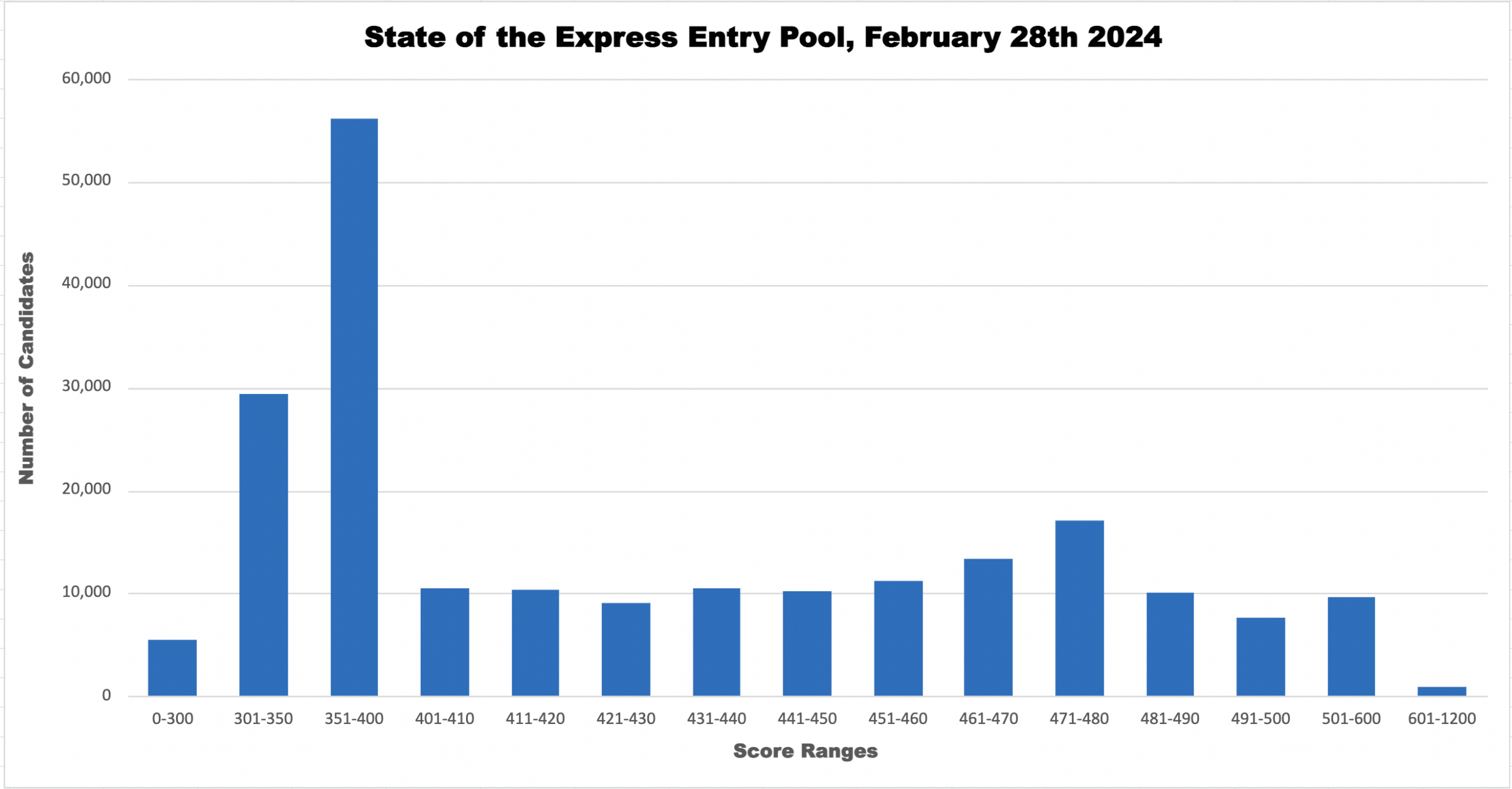Canada’s Express Entry management system has continued into 2024, issuing more invitations to apply (ITAs) to candidates from all three of its programs.
The composition of the candidate pool is a key factor in how the Comprehensive Ranking System (CRS) cut-off scores and the draw sizes are determined under Express Entry, is. While it is very difficult to predict these two factors with certainty, newcomers may benefit by understanding the current state of the Express Entry pool, to better know what to expect.
How does the composition of the Express Entry candidate pool influence CRS and draw size?
While it can be difficult to know exactly how the make-up of the Express Entry pool will impact CRS scores and draw sizes, there are some general trends that can help newcomers better understand what to expect in upcoming draws.
Distribution of scores impacts CRS cut-offs
The distribution of the scores within the pool may play a direct part in determining CRS cut-offs for upcoming draws. The basic logic here is that as the spread of scores in the pool skews higher or lower (depending on the addition/subtraction of profiles, the number of people invited in the previous draw, and the number of profiles that expire and are no longer eligible to be considered for draws).
For example, if there are a a large number of people in the Express Entry pool from the Canadian Experience Class (CEC)—one of the three Express Entry managed programs—then this might cause average CRS scores within the pool to increase, as the scoring criteria under the CRS tends to reward those with previous Canadian work or study experience more than other factors.
Category-based draws can also influence the spread of scores
In 2023 IRCC made substantial changes to the Express Entry system, by creating immigration categories to better meet Canada’s labour market and demographic needs. Through the introduction of these category-based draws, candidates with specific professional experience or language proficiency that Canada needs (and who qualify under eligibility criteria for a category) can receive ITAs through the Express Entry system—regardless of their CRS score.
The immigration department has confirmed that they will maintain the same categories throughout 2024 that were implemented in 2023. These are:
- Healthcare (targeting candidates with professional experience in healthcare);
- Science Technology Engineering and Math (STEM, targeting candidates with professional experience in these fields);
- Trades (targeting those with professional experience in skilled trades);
- Transport (targeting those with professional experience in transport-related occupations);
- Agriculture and Agri-food ((targeting candidates with professional experience in agriculture related occupations); and
- French language proficiency (targeting candidates who have achieved at least a level 7 in French reading, writing, listening and speaking, according to the Niveaux de compétence linguistique canadien (NCLC)—Canada’s scale for assessing French ability).
To learn more about category-based draws, visit our dedicated webpage here.
Immigration levels will determine draw sizes and limits throughout the year
Every year Canada publishes its updated immigration levels plan for the year ahead. This plan details the number of immigrants that Canada will welcome for the next three years, from each of its four immigration classes (economic, family, refugee, and humanitarian).
Express Entry falls under the economic class—the single largest group of immigrants that Canada welcomes every year—as does the Provincial Nominee Program (PNP) and other work-related programs. This year Canada will welcome 281,135 immigrants through economic streams, 110,770 of which will come through Express Entry managed programs.
Thus far (February 28th, 2024), IRCC has issued 16,910 ITAs through Express Entry in 2024.
The current state of the Express Entry pool
As of February 27th, 2024 (the latest data available), there were 211,487 candidates in the pool, with the largest section of them having CRS scores between 451-500. Despite this, more than 65% of candidates were below this score grouping, indicating that the Express Entry pool shows a wide range of CRS scores and candidates.
The following table shows the overall spread of scores in the pool, according to data provided by IRCC.
This graph similarly shows the spread, comparing the number of people in each score range:

Taking the top end of each score range, we can even compare what percentile each score would put a candidate in. Though this again cannot say with certainty whether one will receive an ITA, it is a key indication as to how a score stacks up in the current makeup of the Express Entry pool.

